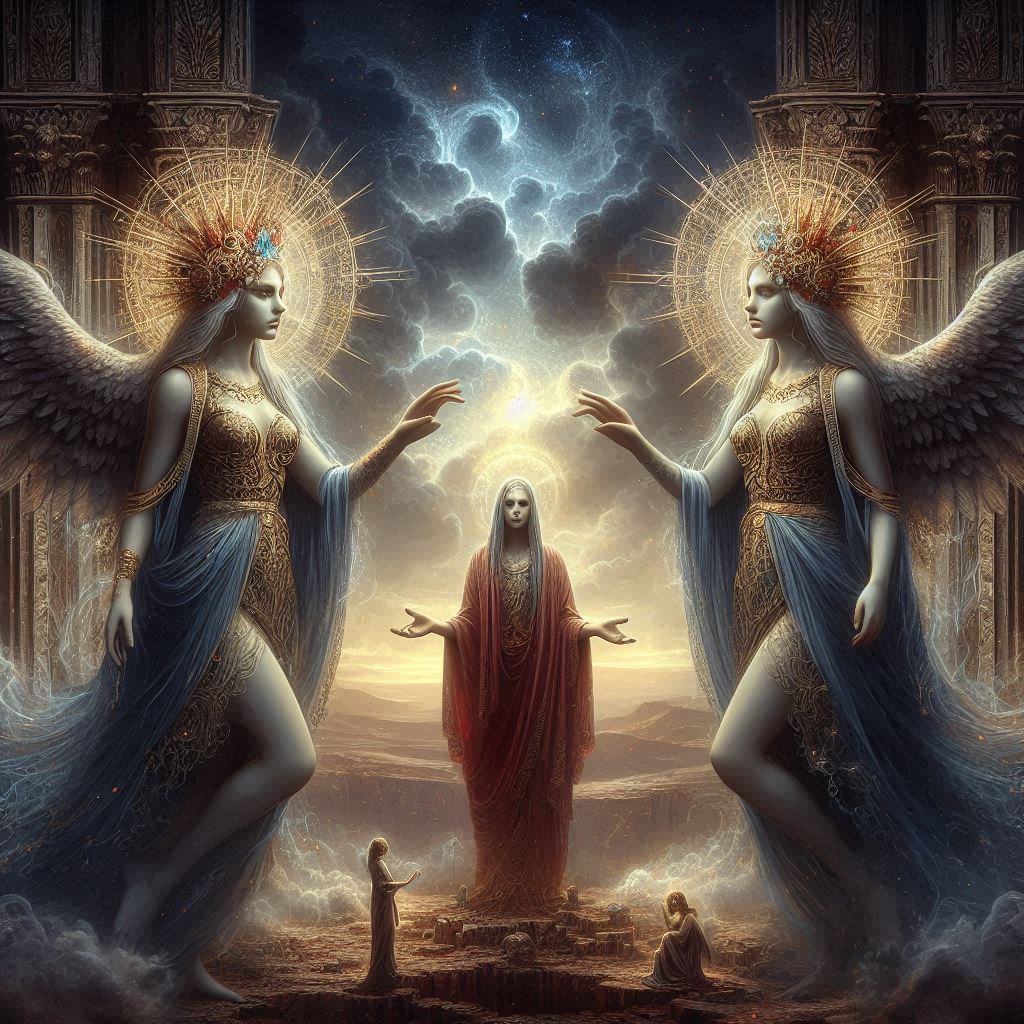Table of Contents
Twins in Literature: A Study of Duality, Identity, and Complexity
Twins have been a compelling motif in literature for centuries, embodying duality, mirroring, and the complexities of human identity. From ancient myths to contemporary novels, the use of twins reflects profound questions about individuality, the interplay between nature and nurture, and the human struggle with the self and the other. This essay explores how literature has utilized twins to address these themes, offering insight into both the characters and the broader human condition.

The Symbolism of Twins in Myth and Folklore
The literary portrayal of twins often draws from archetypes rooted in mythology and folklore. Twins frequently symbolize dual aspects of existence: good and evil, order and chaos, or harmony and discord. In many myths, twins are associated with cosmic balance. The twin brothers Romulus and Remus, founders of Rome, embody both cooperation and rivalry, with their fraternal conflict leading to the establishment of a civilization. Similarly, the Mayan Popol Vuh recounts the adventures of the Hero Twins, Hunahpú and Xbalanqué, whose trials in the underworld symbolize the triumph of life over death.
These narratives set a foundation for twins as carriers of dichotomies, embodying the tension between interconnectedness and individuality. Myths often portray twins as destined figures whose lives are intertwined with larger cosmic or societal narratives, a theme echoed in later literary works.
Twins as Mirrors of Identity and Alterity
In literature, twins often serve as mirrors, reflecting not only each other but also the broader human quest for self-understanding. This mirroring can reveal the fragility of identity and the unsettling proximity of the “other” within the self. William Shakespeare’s Twelfth Night employs twins Viola and Sebastian to explore mistaken identity, gender fluidity, and the boundaries of love. Viola, disguised as a man, unwittingly disrupts the established social order, with her twin’s eventual arrival restoring balance and revealing the underlying truths of the narrative.
Twins also probe the psychological dimensions of identity. Fyodor Dostoevsky’s novella The Double delves into the life of a man confronted by his doppelgänger—a thematic cousin to the twin motif. Though not literal twins, the doppelgänger and protagonist embody a fracturing of the self, illustrating the anxiety of individuality threatened by an identical “other.”
Conflict and Complementarity
Twins are often depicted as opposites locked in a relationship of conflict and complementarity. The trope of the “evil twin,” contrasting with a virtuous counterpart, is a recurring narrative device. Alexandre Dumas’ The Man in the Iron Mask illustrates this dynamic, where the imprisoned twin represents suppressed truth and justice, while the ruling twin embodies corruption and tyranny. This dichotomy underscores the moral and ethical tensions inherent in human governance and identity.
Conversely, literature sometimes portrays twins as harmonious counterparts. In Arundhati Roy’s The God of Small Things, Estha and Rahel share a bond so intimate that they seem to inhabit each other’s thoughts and emotions. Their twinship transcends the physical realm, becoming a poignant metaphor for the interconnectedness of love, memory, and trauma.
Twins in Modern Literature: Complexity and Subversion
Modern literature often subverts traditional twin archetypes, exploring their implications in nuanced and psychologically complex ways. Jeffrey Eugenides’ Middlesex features a protagonist, Cal, who is not a twin but embodies duality as an intersex individual. While not literal twins, Cal’s dual nature evokes the literary fascination with doubling and the tension between competing aspects of identity.
Markus Zusak’s Bridge of Clay features twin brothers who grapple with familial loss and betrayal. Here, twinship is not merely symbolic but deeply entwined with the narrative’s exploration of love, guilt, and redemption. The twins’ shared yet divergent paths illuminate the tension between shared heritage and personal agency.
Twins as a Reflection of Broader Themes
Twins in literature often serve as a microcosm for broader social, psychological, or philosophical themes. They invite readers to question binaries such as good versus evil, self versus other, and unity versus division. By embodying these dualities, twins allow authors to interrogate the nature of human existence and the structures that define it.
Conclusion
Twins in literature are far more than mere characters; they are profound symbols of duality and complexity, offering a lens through which to examine identity, morality, and human relationships. From their mythical origins to their multifaceted roles in contemporary narratives, twins have consistently challenged the boundaries of individuality and interconnectedness. Through the stories they inhabit, twins illuminate the dualities within us all, providing fertile ground for reflection and artistic exploration.


No responses yet